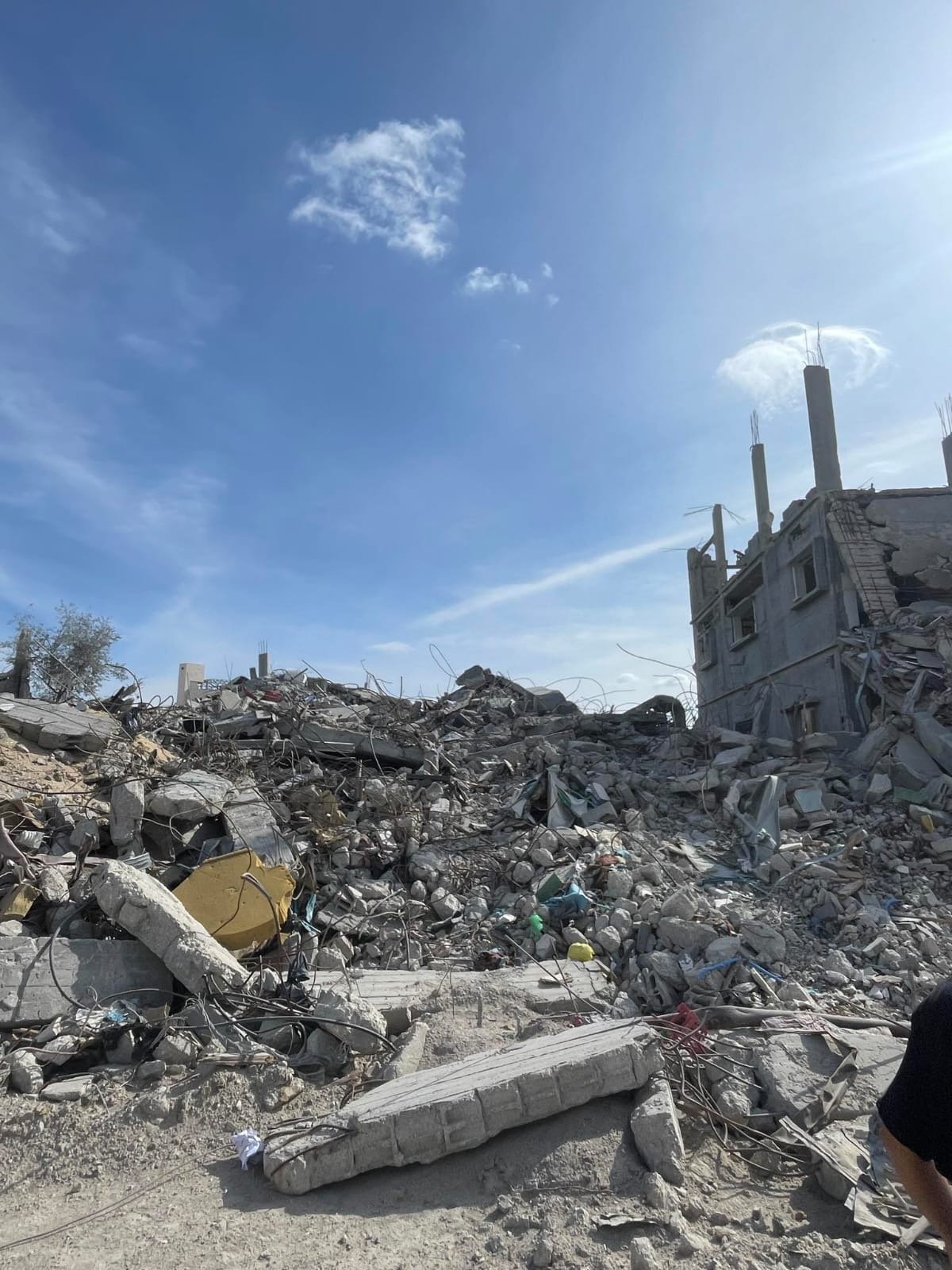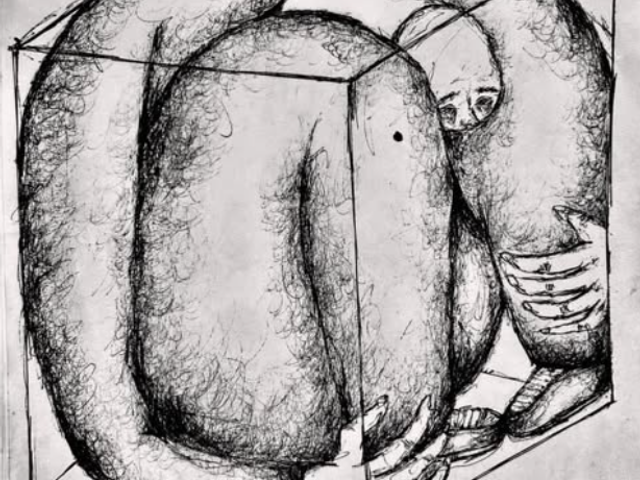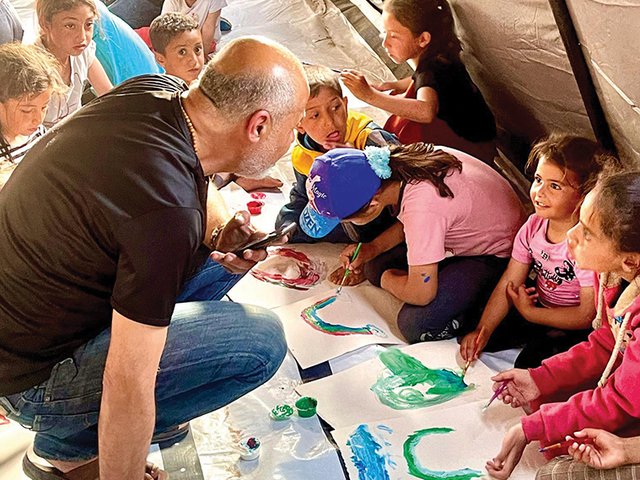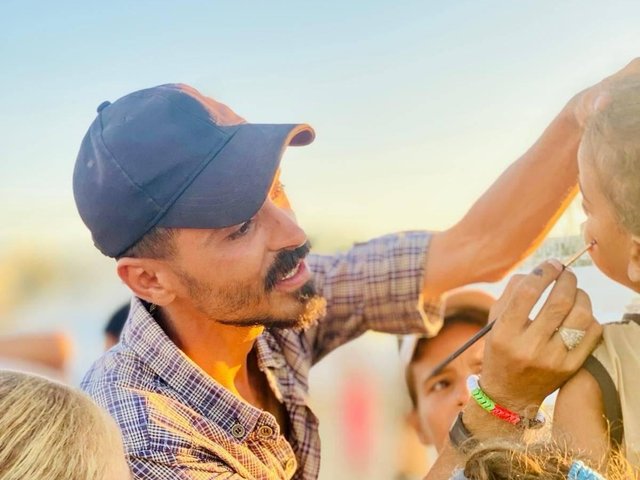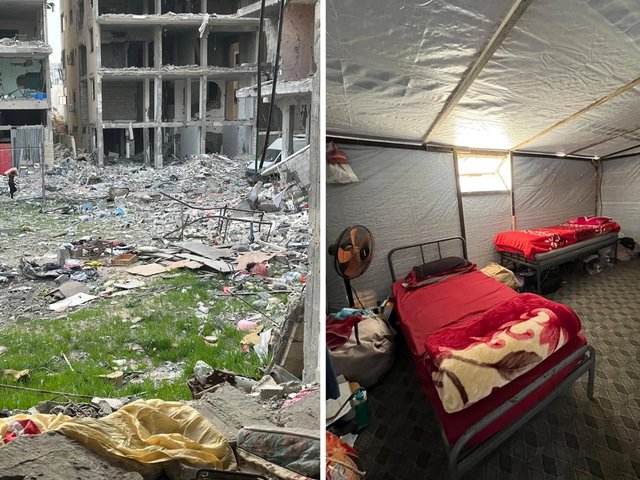For the first time in 15 months of relentless war, the skies over Gaza were free of Israeli fighter jets on Sunday, as a ceasefire between Israel and Hamas took effect.
Celebrations erupted on both sides after Hamas released three female hostages, followed by Israel freeing 90 Palestinian women and children from its prisons.
Trucks with desperately needed humanitarian aid were also allowed into Gaza, offering a glimmer of relief amid the devastation.
The ceasefire, set to unfold in three stages, begins with a six-week initial phase. During this period, Israel will gradually withdraw from central Gaza, enabling displaced Palestinians to return home. Hamas will release 33 Israeli hostages, including women, children, and men over 50, while Israel is expected to free around 1,000 to 2,000 Palestinians from its prisons, including women and children. Additionally, the deal requires 600 truckloads of humanitarian aid to enter Gaza daily.
Yet for Palestinians in Gaza, including artists and cultural workers, the ceasefire is a bittersweet moment. With the immediate danger over, they are grappling with the loss of families, friends and homes. Many view the deal as fragile, their cautious optimism tempered by the uncertainty of what lies ahead, leaving little room to plan for the future.
Joy
“Certainly, the news of stopping the genocide was good news that brought joy to every Palestinian, allowing us to breathe. It is happiness mixed with a deep and painful wound for every Palestinian who has witnessed the suffering throughout the past 15 months,” Mohammad Alhaj, a 42-year-old visual artist, tells The Art Newspaper. “The coming days will carry great pain, because the war simply ended after everything that has happened, and only now our tears will begin to flow.”
The displaced father of four is still not permitted to return to his home in Gaza City as the area remains cut off by Israeli forces. According to current instructions, Palestinians can begin to return to the north on foot after the seventh day of the ceasefire. Access to areas within Gaza’s borders is also still restricted, and people have been strictly warned against approaching these zones and the north.
Alhaj, a 20-year art world veteran, who lost his studio and all his work during the war, says he is eager to return home but will wait to see how the ceasefire holds before travelling. But the trip will be a solitary one, he says, as he first wants to assess whether it is feasible for his family to return.
Although he has continued creating art throughout the war, completing two series—Abu Al-Kuffiyeh and Diary of a Palestinian Displaced Person—Alhaj remains uncertain about the future of the arts. He suspects that art will not be a priority due to the scale of destruction. “Major challenges await us,” he says. “No one knows what will happen in the coming days and the extent of commitment to the truce. We have no choice but to wait and watch.”
Unable to return home
The muralist and performance artist Ayman Alhossary, like Alhaj, has yet to return to his home in Gaza City. Both his home and studio were destroyed during the war, but he plans to return when access is permitted to salvage what he can from the rubble.
Alhossary says that Sunday and Monday were the first time in nearly 500 days since he and his wife did not have to pretend to their nearly two-year-old daughter that the sound of explosions were fireworks—a trick they had developed to shield her from the horror of the war.
Once he has gathered his belongings and Israel reopens the Gaza border, Alhossary plans to leave Gaza in search of job opportunities abroad. “Gaza will need time to rise again. The work here will focus on reconstruction and rebuilding, and as a visual artist, I see no work available for me in the near future,” he says.
He also emphasises the precariousness of the situation. “I don't know what will happen. We are still in a state of shock, as if it were all a dream, hoping that this nightmare will end.”
All that remains is rubble
The sculptor Khaled Hussein, originally from Rafah, has been displaced in Deir al-Balah, in central Gaza, since May 2024, when Israel ordered Rafah residents to leave. After seven months, he finally returned to Rafah on Sunday, alone, to check on his home. The scale of destruction left him in complete disbelief. “I was so shocked that I couldn’t locate my home,” he says. When he finally did, all that remained was a pile of rubble.
“The extent of the destruction in Rafah is vast, and it will take a long time to restore—at least the water and communication lines,” he adds
He spent Sunday night in Rafah but regretted it. With the Israeli military still present along the Egyptian border, close to Rafah, he spent the night listening to gunfire and the movement of tanks, all while cut off from communication.
He managed to recover some winter clothes and two of his paintings from the ruins before returning to Deir al-Balah on Monday.
Although leaving Gaza is both extremely difficult and expensive, Hussein says he hopes to secure an art residency abroad for the sake of his children’s future. “We are now living through a second war, caught in a state of confusion between the present and the future,” he says. “It is very difficult to make plans because all the possible solutions are bad.”
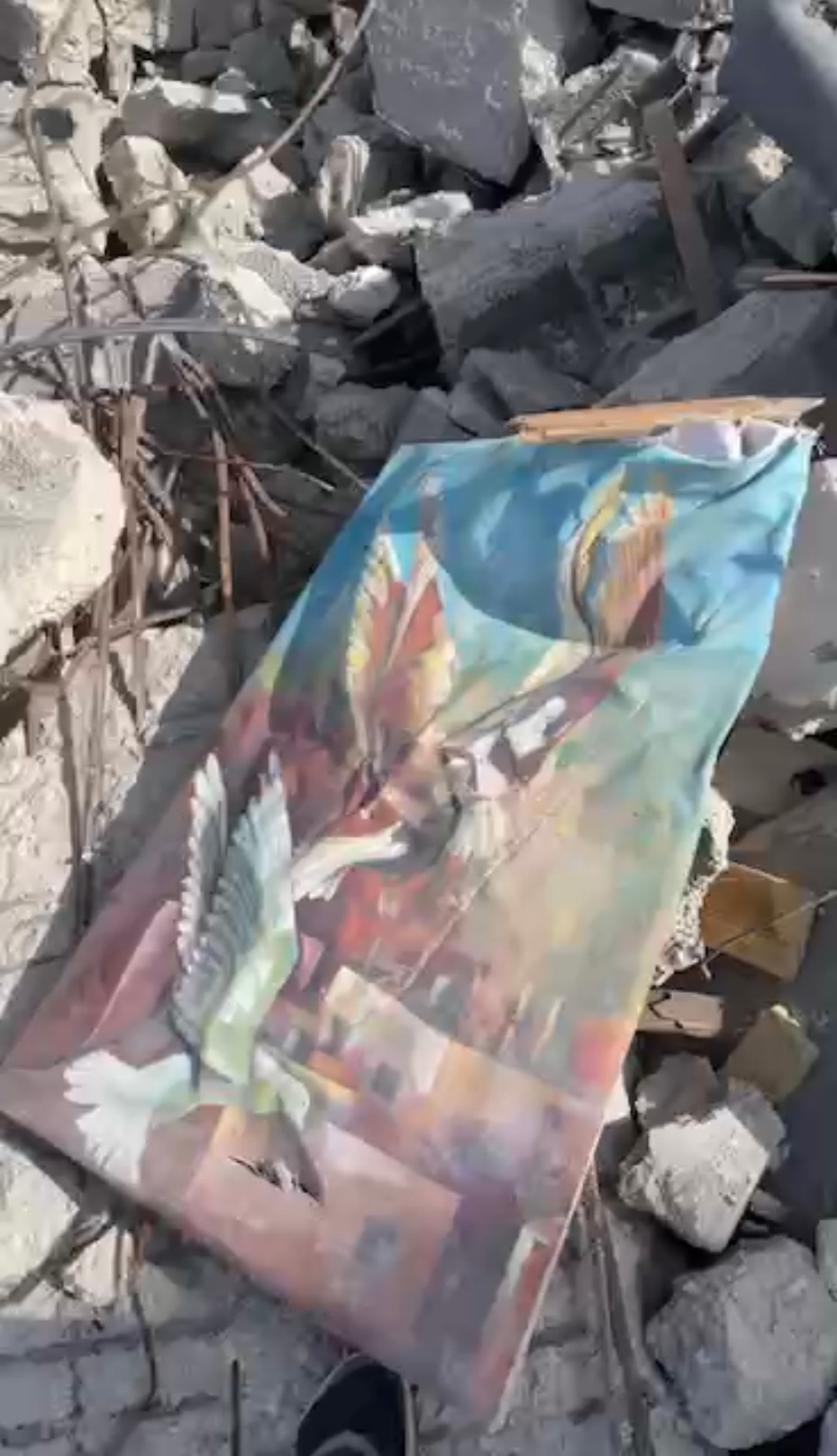
© Khaled Hussein
No water, no life
Suhaila Shaheen, the owner of Rafah Museum and a cultural activist, also made the difficult journey back to Rafah from Khan Yunis on Sunday, only to find her home was gone. “There was no water or life in the area,” Shaheen says.
The 62-year-old was unable to assess the condition of her museum as it is located near the Egyptian border and access to the area is prohibited at present. The museum, which opened in 2022 with a collection that included ancient Byzantine and Bedouin artefacts, was struck by an Israeli missile early in the war at a time when Rafah was designated a safe zone.
“I don’t know if there are still things under the rubble or if they’ve been swept away,” she says. Despite losing all her belongings, Shaheen is more devastated by the destruction of her museum than her home. “The house can be rebuilt, but possessions hundreds of years old are irreplaceable. I will rebuild the heritage museum, God willing, if the war ends permanently.” Exhausted by the war’s hardships, though, she intends first to travel to Egypt to recover psychologically before making any future plans.
“I hope that a permanent agreement will be reached, that the prisoners will be returned in peace, and that we will live in peace too, because we are tired,” she says.
Dreaming of peace
Negotiations for phase two of the ceasefire, which will include a permanent end to the war, full Israeli withdrawal and the release of all remaining hostages, are set to begin by the 16th day of phase one. Phase three will focus on returning all bodies and initiating Gaza’s reconstruction.
“The war may have stopped but it’s not over. This truce could collapse easily, because it does not have a clear political horizon,” Sohail Salem, a visual artist and co-founder of Eltiqa Group for Contemporary Art—one of Gaza’s prominent art institutes, tells The Art Newspaper.
Originally from northern Gaza, Salem had to leave for Deir al-Balah in January 2024 after he was briefly detained and interrogated by Israeli soldiers. While the absence of explosions has brought some calm, he says, life remains largely unchanged. “The surveillance planes still hover over Gaza’s skies. I still sleep in a garage with my wife and children, with the same basic tools and some simple blankets and mattresses. The electricity is still cut off and we still have to find water,” he explains, adding he is grateful that he and his wife and children have survived the war.
Salem is counting the days until he can return to the north and reunite with his parents and siblings, whom he has not seen for over a year. “I’m excited to search for some of my paintings or special things that hold great meaning in my heart. I don’t know where to begin, and I am still worried. Our lives will be full of battles, and memories will haunt us. We will need time to recover and return to some normalcy.”
Lost faith
Salem says he has lost faith in the international community after the suffering he has witnessed, and he is now considering leaving Gaza to “recover from the bitter experience”. He adds: “We [Palestinians] have no choices in our lives, especially in Gaza. Our conditions are unstable throughout our lives, and always in conflict. I wish for us to live a normal, safe and free life.”
According to the United Nations Office for the Coordination of Humanitarian Affairs (OCHA), 92% of all the housing in Gaza has been destroyed or damaged. Of Gaza’s population of 2.1 million, 90% have been displaced and 1.875 million are in urgent need of emergency shelter and household items.
More than 47,000 Palestinians have been killed since the start of the conflict, says the local health ministry. Israel began its invasion of Gaza following the 7 October 2023 attack by Hamas, during which around 1,200 Israelis were killed and around 250 taken hostage, according to Israeli tallies. Around 100 hostages still remain in Gaza; the rest have been released, rescued or had their bodies recovered.


